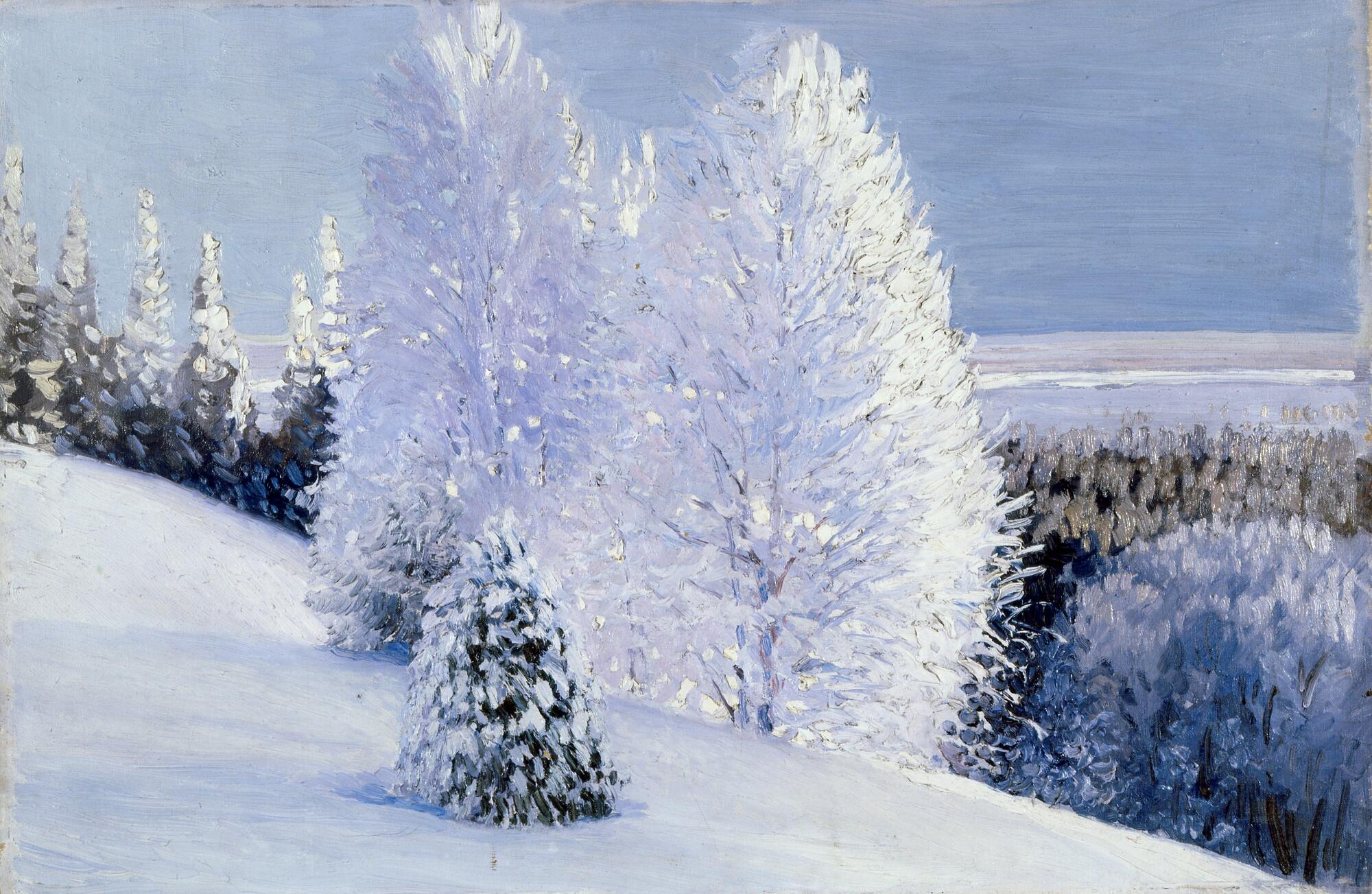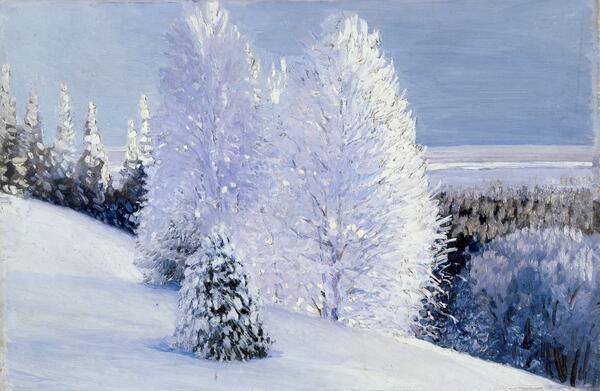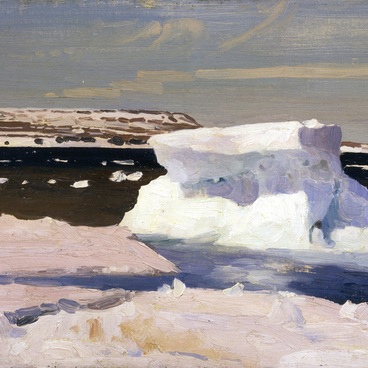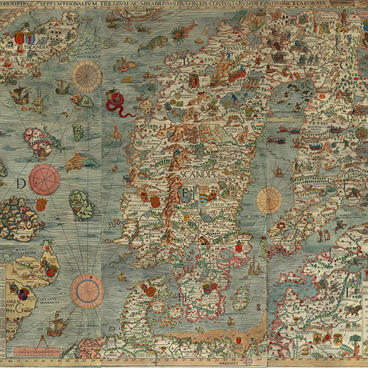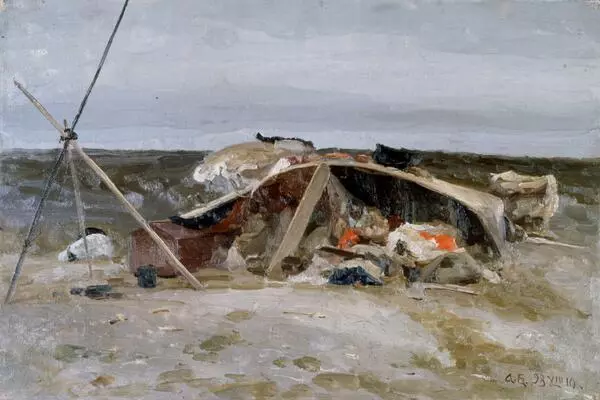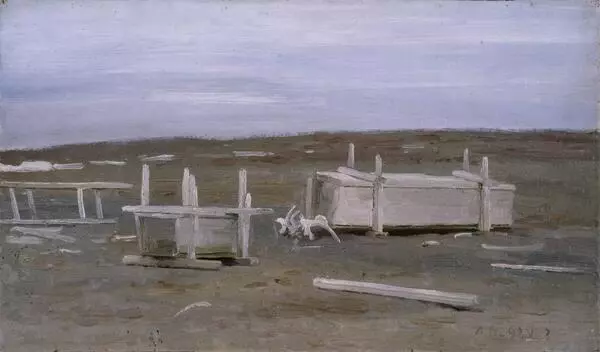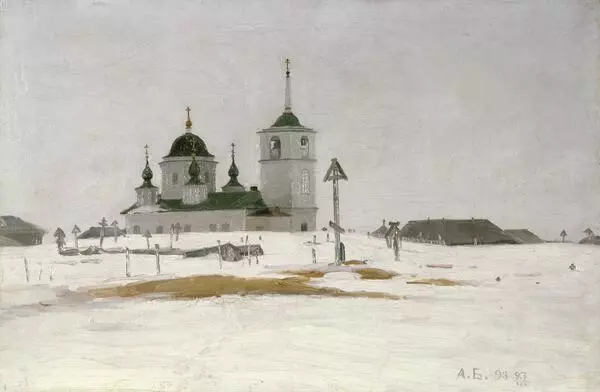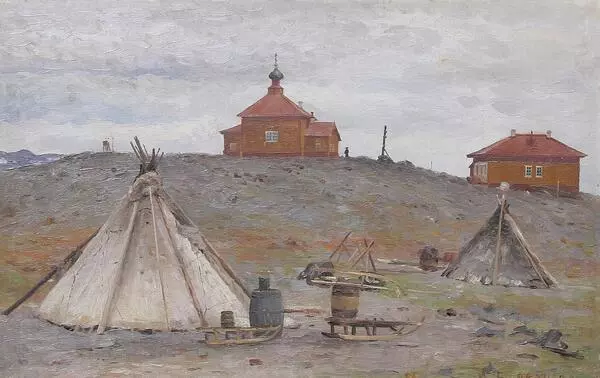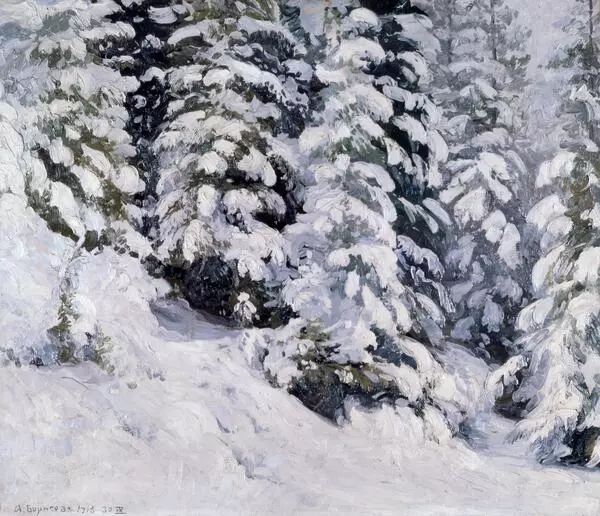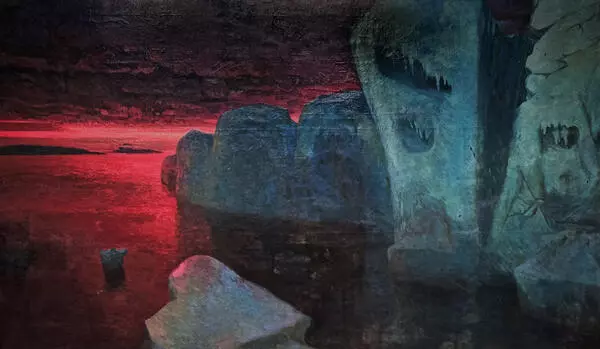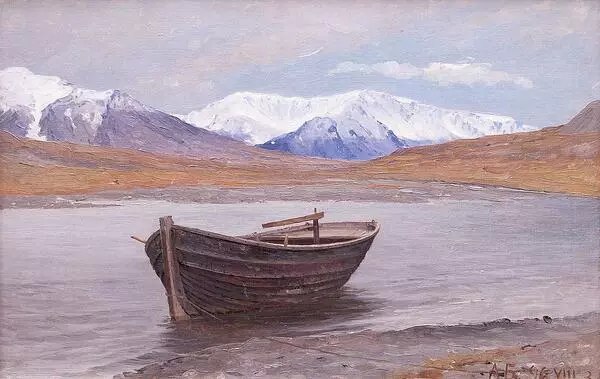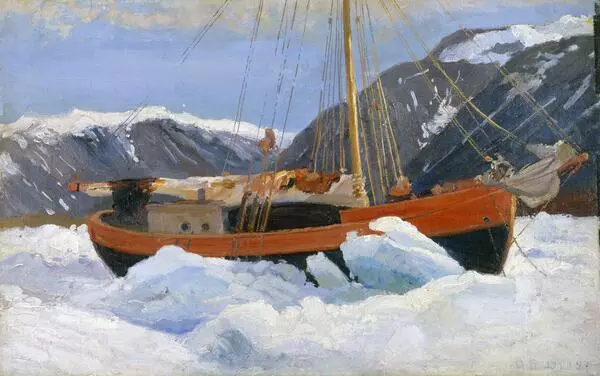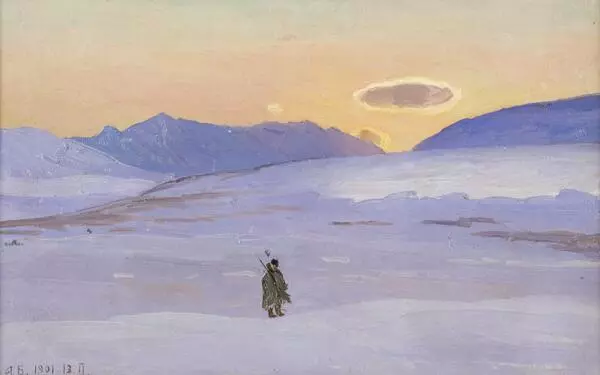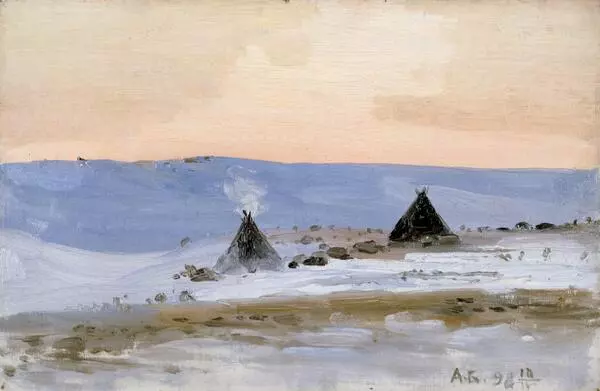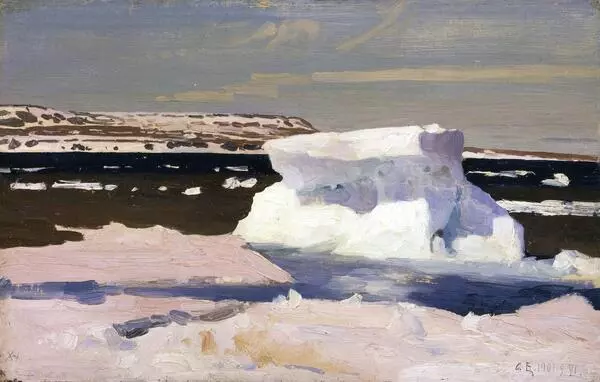In the 1910s, Alexander Borisov started painting winter woods. All the landscapes he created in that period form a series that could be given a title Winter Fairy Tale. Its charm mostly resides in its uniqueness and originality. The paintings are full of sunlight.
Borisov used to say: ‘I have a soft spot for one more thing, the forest! I am a Shishkin’s student, and I would like to paint a series of forest pictures. I will not depict it as seen from a distance, but from inside, from the thick of it, I will paint trees with all their little snags, their needles, moss, and brushwood.
Borisov found a new tonality and a dreamy beauty of snow-covered forests in his native village of Krasnoborsk. He went to the forest in a cart with a driver. He worked for many hours with much enthusiasm, using turpentine to reanimate the hands that were going numb. Borisov liked severe, searing frost. And the more severe it was, the dreamier became the forest enfolded in silence, and the artist went to work with even more enthusiasm.
The painting Sunny Winter Day on the Dvina River shows a merry winter day. In the middle ground, there are several young trees, reaching for the pale blue frosting sky. Their crowns, enveloped in fluffy snow mantles, are sparkling in the sun. The lower branches are covered with lucid blue shadows. The slope of the steep hill is blueish-white, the line running diagonally through the canvas. Behind the young trees, there is a dense forest stretching until the horizon marked by the frozen Dvina River. The dark trees have delicate purple and brown hues.
The habit of painting in cold weather with ease and precision is clearly manifested in the ‘forest’ series by Borisov. The picture instantly creates an atmosphere of Russian winter with its crisp fragrant air and bitter frost. The artist’s brush forms the shapes with large, heavy strokes. It is as if the artist is in a hurry to capture the fleeting image of the winter forest.
However, there is a thoughtful, diligent study of the scenery hiding behind the deceptive carelessness. As for the composition of the “forest” paintings, there is none: these landscapes are a thing in itself. Borisov’s attitude towards the composition reminds of the old Russian masters: much like them, he prefers simple subjects.
Borisov used to say: ‘I have a soft spot for one more thing, the forest! I am a Shishkin’s student, and I would like to paint a series of forest pictures. I will not depict it as seen from a distance, but from inside, from the thick of it, I will paint trees with all their little snags, their needles, moss, and brushwood.
Borisov found a new tonality and a dreamy beauty of snow-covered forests in his native village of Krasnoborsk. He went to the forest in a cart with a driver. He worked for many hours with much enthusiasm, using turpentine to reanimate the hands that were going numb. Borisov liked severe, searing frost. And the more severe it was, the dreamier became the forest enfolded in silence, and the artist went to work with even more enthusiasm.
The painting Sunny Winter Day on the Dvina River shows a merry winter day. In the middle ground, there are several young trees, reaching for the pale blue frosting sky. Their crowns, enveloped in fluffy snow mantles, are sparkling in the sun. The lower branches are covered with lucid blue shadows. The slope of the steep hill is blueish-white, the line running diagonally through the canvas. Behind the young trees, there is a dense forest stretching until the horizon marked by the frozen Dvina River. The dark trees have delicate purple and brown hues.
The habit of painting in cold weather with ease and precision is clearly manifested in the ‘forest’ series by Borisov. The picture instantly creates an atmosphere of Russian winter with its crisp fragrant air and bitter frost. The artist’s brush forms the shapes with large, heavy strokes. It is as if the artist is in a hurry to capture the fleeting image of the winter forest.
However, there is a thoughtful, diligent study of the scenery hiding behind the deceptive carelessness. As for the composition of the “forest” paintings, there is none: these landscapes are a thing in itself. Borisov’s attitude towards the composition reminds of the old Russian masters: much like them, he prefers simple subjects.
